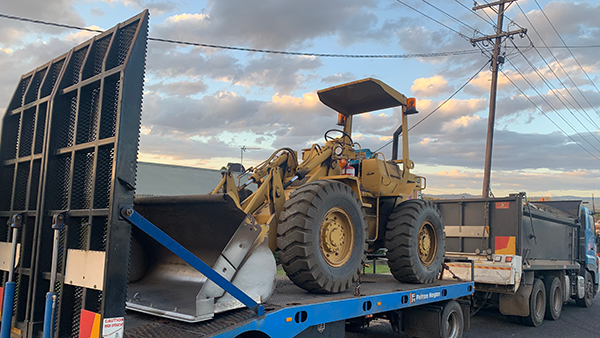Several years ago, whilst working on a major infrastructure project, I asked a driver how he knew what restraint his load required. He confidently replied that his load weighed forty tonnes and so he applied one 10-millimetre chain, which were rated to ten tonnes on each corner, four in total, so that he achieved forty tonnes of restraint.
Unfortunately, correct load restraint relies on more than just the lashing capacity, such as friction and the lashing angle. In this case, even if this was correct only the two rear chains would have prevented forward movement, as the front chains would have loosened in an emergency braking incident.
Even in relation to the lashing capacity, 10-millimetre transport chain is only rated to six tonnes not ten. When I pointed out that the hook was marked six-tonne the driver attempted to convince me this was its lifting capacity until we actually consulted the Load Restraint Guide. It was clear the load was well short of the legal requirement to restrain 80% of its weight in the forwards direction, so I asked the driver whether he had any load restraint training. His answer was he had been driving a truck since he was a boy as both his grandfather and father were truck drivers but had never received any formal training.
Sadly, his situation and the misunderstandings that arise from a lack of training are far too common. Many drivers and loaders have never received formal load restraint training. They have been taught to restrain loads by older colleagues or have learnt through trial and error on the basis that the load arrived without moving so the restraint must be correct! However, the absence of prior incidents is not evidence that loads are legally secured.
Many drivers have told me that all they had to do to get their licence was throw a strap over the load and tension the binder, there was no training in factors such as the impact of friction or angles – because, unlike an electrician or plumber, beyond having an appropriate driver’s licence there is no mandatory load restraint qualification to drive a heavy vehicle.
Recent regulatory guidance by the NHVR highlights the safety risks of undertrained workers. Under the Heavy Vehicle National Law parties in the Chain of Responsibility have a primary duty to eliminate or minimise potential risks associated with transport activities, as far as reasonably practicable. Based on the risk of a load shifting or becoming dislodged it would be difficult to justify that ensuring those loading and transporting goods were competent in securing loads was not reasonable.
 Graeme Agnew is an internationally recognised transport safety and load restraint expert. As part of the HSE Global Transport Safety team he helps businesses meet their CoR obligations including assisting with Risk Assessments, Training Needs Analysis, as well as on-site training and reviews.
Graeme Agnew is an internationally recognised transport safety and load restraint expert. As part of the HSE Global Transport Safety team he helps businesses meet their CoR obligations including assisting with Risk Assessments, Training Needs Analysis, as well as on-site training and reviews.
He is also the primary subject matter expert for HSE Global’s Online CoR training.

